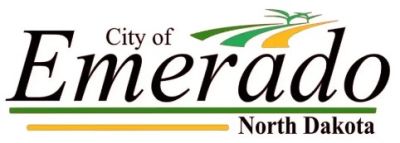Fire Danger
4/5/2024
It is that time of year again, when communities must monitor the fire danger index for the region. It is critical that you verify current restrictions before burning or participating in outdoor activities as conditions may develop throughout the day, such as issuance of a Red Flag Warning, that results in a change in restriction status. Within the City of Emerado, a permit is REQUIRED for recreational burning, such as campfires. Contact City Hall to obtian your burn permit. When the fire danger, monitored by City, Police and Fire Officials reaches HIGH or above, we ask that you refrain from any form of burning to prevent disasters. For more information, or any further questions, don't hesitate to reach out to City Hall, or even the Fire Department for questions! You can easily find the DAILY UPDATES on the fire danger here at: https://www.ndresponse.gov/burn-restrictions-fire-danger-maps
What are the different levels and what do they mean?
We use 5 different color-coded levels to help the public understand fire potential. The purpose of this is for visitors to understand the current conditions and help mitigate their actions to prevent human-caused wildfires.
Fire Danger Level: Low
When the fire danger is "low" it means that fuels do not ignite easily from small embers, but a more intense heat source, such as lightning, may start fires in duff or dry rotten wood. Fires in open, dry grasslands may burn easily a few hours after a rain, but most wood fires will spread slowly, creeping or smoldering. Control of fires is generally easy.
Fire Danger Level: Moderate
When the fire danger is "moderate" it means that fires can start from most accidental causes, but the number of fire starts is usually pretty low. If a fire does start in an open, dry grassland, it will burn and spread quickly on windy days. Most wood fires will spread slowly to moderately. Average fire intensity will be moderate except in heavy concentrations of fuel, which may burn hot. Fires are still not likely to become serious and are often easy to control.
Fire Danger Level: High
When the fire danger is "high", fires can start easily from most causes and small fuels (such as grasses and needles) will ignite readily. Unattended campfires and brush fires are likely to escape. Fires will spread easily, with some areas of high-intensity burning on slopes or concentrated fuels. Fires can become serious and difficult to control unless they are put out while they are still small.
Fire Danger Level: Very High
When the fire danger is "very high", fires will start easily from most causes. The fires will spread rapidly and have a quick increase in intensity, right after ignition. Small fires can quickly become large fires and exhibit extreme fire intensity, such as long-distance spotting and fire whirls. These fires can be difficult to control and will often become much larger and longer-lasting fires.
Fire Danger Level: Extreme
When the fire danger is "extreme", fires of all types start quickly and burn intensely. All fires are potentially serious and can spread very quickly with intense burning. Small fires become big fires much faster than at the "very high" level. Spot fires are probable, with long-distance spotting likely. These fires are very difficult to fight and may become very dangerous and often last for several days.
Burning is prohibited if the fire index is in the extreme category as issued by the National Weather Service or if a burning restriction is declared by state or local officials. The authority to conduct open burning under this section does not exempt or excuse a person from the consequences, damages, or injuries that may result therefrom. Burning activities must be attended and supervised at all times burning is in progress.

